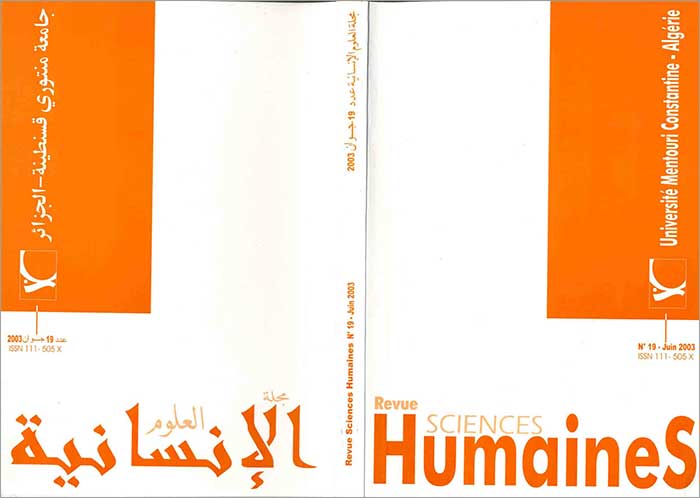Where did pragmatics come from ?
الملخص
The present study is concerned with the early beginnings of pragmatics. It investigated the linguistic and philosophical backgrounds of this field. It was argued that pragmatics grew within philosophy and its emergence as an independent field was, for some time, delayed by the influence of some linguistic theories especially the generative-transformational theory. Finally, it was pointed out that this field was freed from the influence of this theory.التنزيلات
المراجع
Austin, J. (1962), “How to do things with words”, Oxford University Press.
- Bar-Hillel, Y. (1971), “Out of the pragmatic waste-basket” Linguistic inquiry, 2: 401-407.
- Bloomfield, L. (1933), “Language”, New York: Holt.
- Chomsky, N. (1957), “Syntactic structures”, the Hague: Mouton.
- Chomsky, N. (1965), “Aspects of the theory of syntax”. Cambridge, Mass: MIT Press.
- Chomsky, N. (1980), “Rules and representations”, Oxford: Basil Blackwell.
- Chomsky, N. (1986), “Knowledge of language”, New York: Praeger.
- Chomsky, N. (1999), “On the nature of pragmatics and related issues”. An interview with N. Chomsky, Published in Brain and language, vol.68, n°3, July 1999: 393-401.
- Gazdar, G. (1979), “Pragmatics: Implicature, presupposition and logical form”, New York: Academic Press.
- Green, J. (1989), “Pragmatics and natural language understanding”, New Jersey: Lawrence Earlbaum Associates, Publishers.
- Grice, H. (1975), “Logic and conversation”. In Cole, P. and Morgan, J. (Eds.), Syntax and semantics 3: Speech Acts, New York: Academic Press: 41-58.
- Harris, R. (1993), “The linguistics wars”, Oxford: University Press.
- Horn, L. (1986), “Pragmatic theory”. In Newmeyer, F. (Ed) Linguistics: The Cambridge survey. Vol.1, Cambridge University Press: 113-145.
- Hymes, D. (1972), “On communicative competence”, In Pride, J. and Holmes, (Eds) Sociolinguistics, Harmondsworth : Penguin: 269-293.
- Katz, J. and Fodor, J. (1963), “The structure of a semantic theory” Language: 39: 170-210.
- Kempson, R. (1988), “Grammar and conversational principles”, In Newmeyer, F., Linguistics: Cambridge Survey, vol. II, Cambridge University Press: 139-163.
- Kuhn, T. (1964), “The structure of scientific revolutions”, University of Chicago Press.
- Leech, G. (1983 a), “Semantics”, 2nd edition. Harmondsworth : Penguin Book.
- Leech, G. (1983 b), “Principles of pragmatics”, London: Longman.
- Levinson, S. (1983), “Pragmatics”, Cambridge: Cambridge University Press
- Mey, J. (2001), “Pragmatics”, 2nd Edition Oxford: Blackwell Publishers .
- Morris, C. (1938), “Foundations of the theory of signs”, University of Chicago Press.
- Robins, R. (1971), “General linguistics”, London: Longman.
- Searle, J. (1968), “Speech Acts”, Cambridge: Cambridge University Press.
- Searle, J. (1972), “Chomsky’s Revolution in linguistics” New York Review of Books, June, 19: 16-24.
- Stalnaker, R. (1972), “Pragmatics” In Harman, J. and Davidson, D. (Eds) Semantics of natural language, Dordrecht: Reidel: 380-397.
- Verschueren, J. (1999), “Understanding pragmatics”, London: Arnold.
- Yule, G. (1996), “Pragmati
















